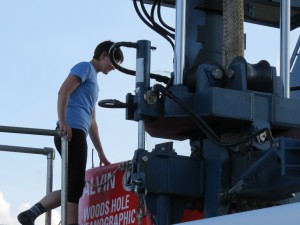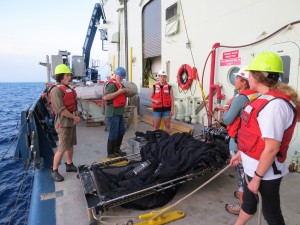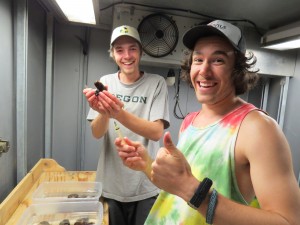OIMB students and faculty are currently participating in deep-sea research on the Research Vessel Atlantis in the Gulf of Mexico. Using the deep submergence vehicle Alvin and the autonomous underwater vehicle Sentry, they are exploring cold methane seeps in the Gulf of Mexico at depths as great as 3500m (about two miles down). The first leg of the cruise, which ended last week, visited seeps along Mississippi, Louisiana and Texas slopes. The second leg visits the deepest site on the Florida escarpment. The NSF funded project is a collaboration among three universities: Duke, North Carolina State, and University of Oregon. The UO portion involves the Young and Maslakova labs, which have primary responsibility for work on larval distributions and dispersal of deep-sea larvae. Fifteen individuals from OIMB, including seven undergraduates and five graduate students are participating in the two legs, and many of these have the opportunity to dive in the Alvin submersible. UO students also spend much of their time at microscopes, seeking the larvae of deep-sea animals in plankton samples collected with a MOCNESS system that collects plankton at night, between Alvin dives.






